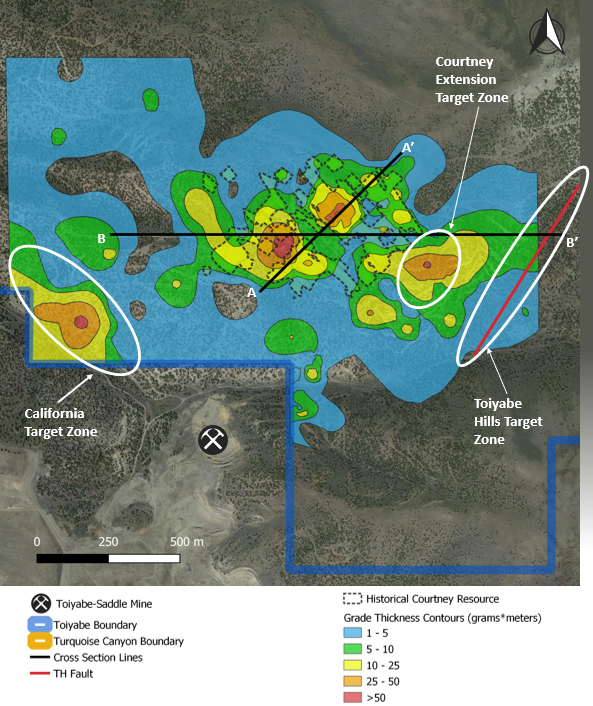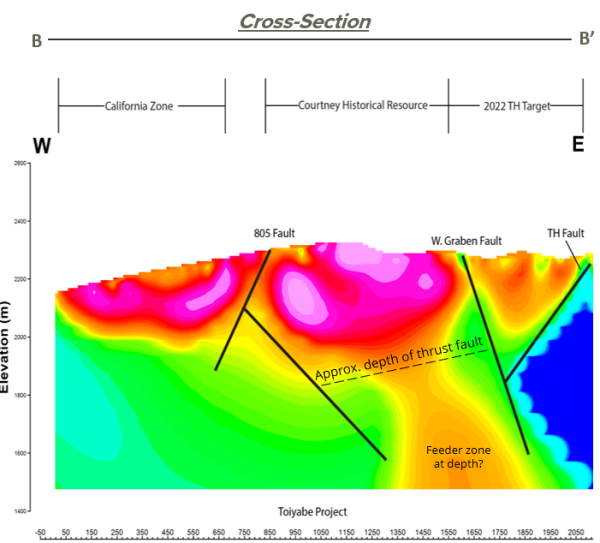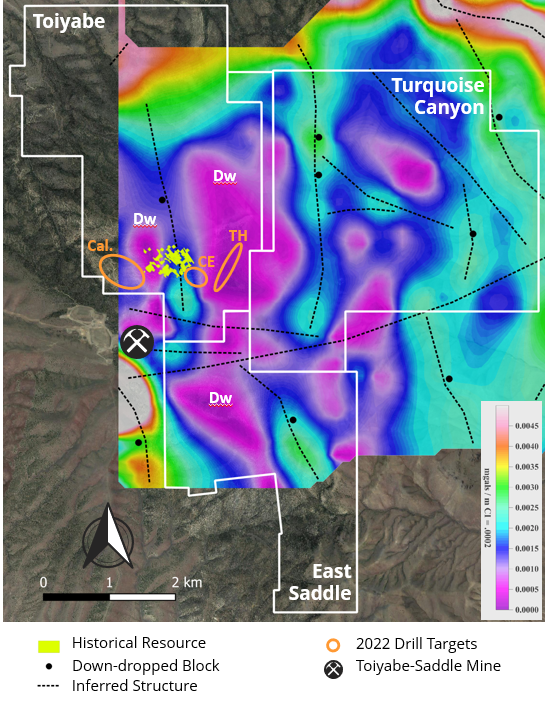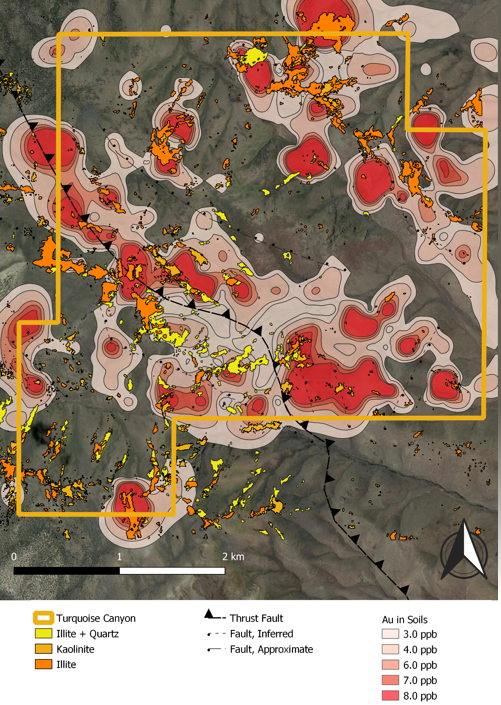Phase 1 Drill Program 
- Large areas of open mineralization identified outside of the historical resource at the Courtney Zone
- Completion of drill hole grade thickness map which contributed to the identification of E-W and NW-SE trends of mineralization at Toiyabe
- Open mineralization will be tested in step-out drilling
- ~4,000m initial program planned
Historical Drilling Review Target Generation 
- Historic drill logs and assays have been integrated with modern gravity, IP, and hyperspectral datasets
- Reinterpretation and new understanding of lithologic/stratigraphic and structural controls on mineralization
➢ Toiyabe Hills Fault is associated with the contact of Upper and Lower Plate formations, a common mineralized zone in Carlin deposits
➢ Silica alteration in the form of Jasperoid discovered along the fault trace during site visit, a key indicator of hydrothermal activity
➢ IP data shows intersection of W. Graben Fault, known to be associated with the historical Courtney resource, and the TH Fault
Reprocessed Gravity Data 
- Previous regional-scale gravity survey reprocessed at a more localized level for improved data resolution and targeting
- Historical Courtney resource hosted in outcropping Wenban Formation (“Dw”) along Horst and Graben structure
➢ The associated gravity anomaly was also identified to the east and south of the historical Courtney resource
- Toiyabe-Saddle Mine hosted in same down-dropped block as historical Courtney resource
- TH Target will test new Dw block → no previous drilling
- California and CE Targets will test structures associated with Horst and Graben features, just as in the historical Courtney resource



